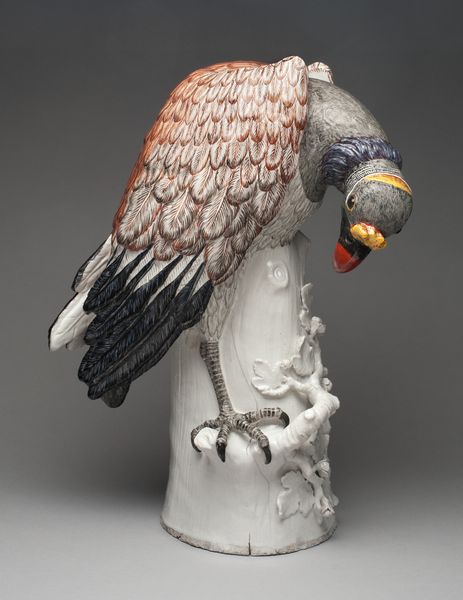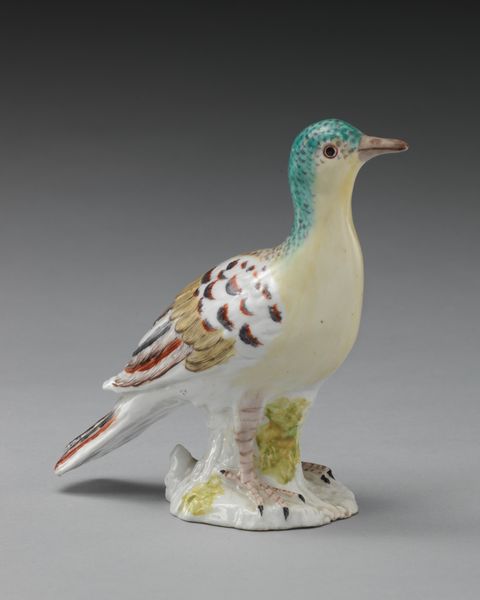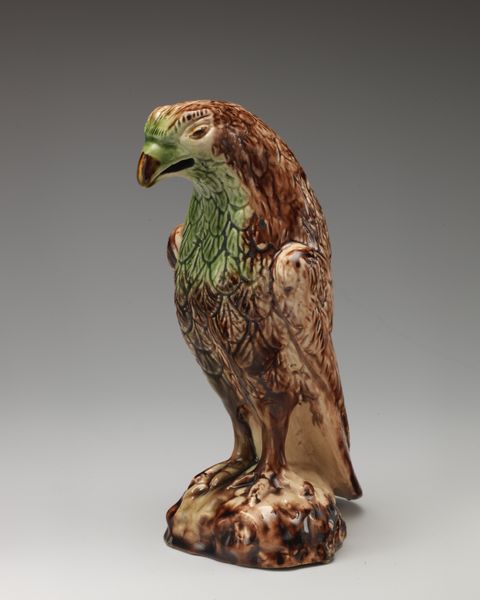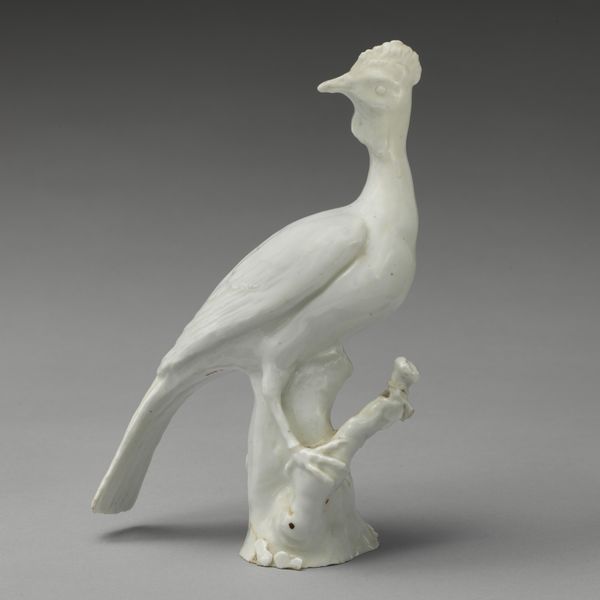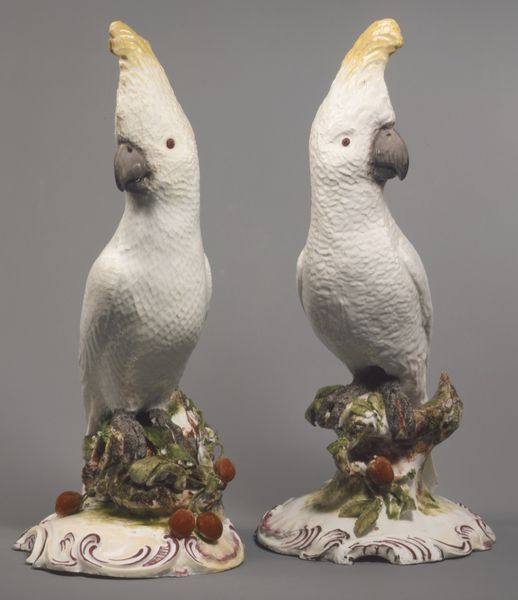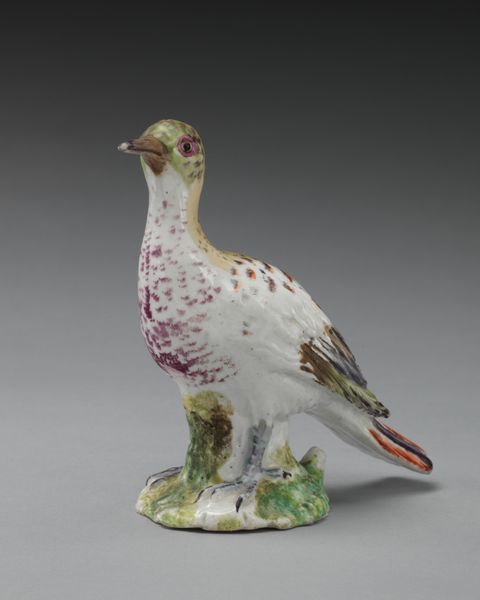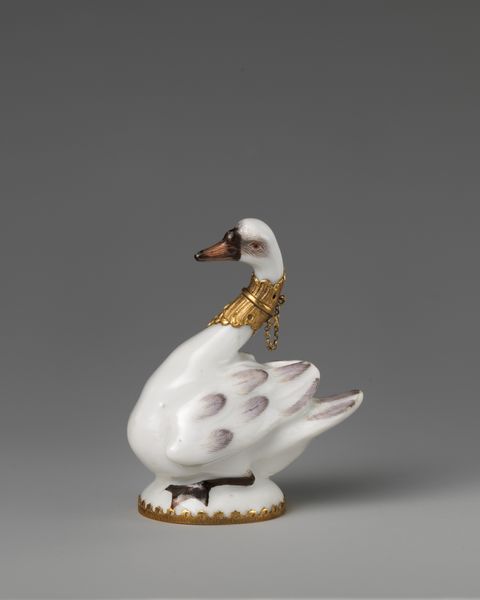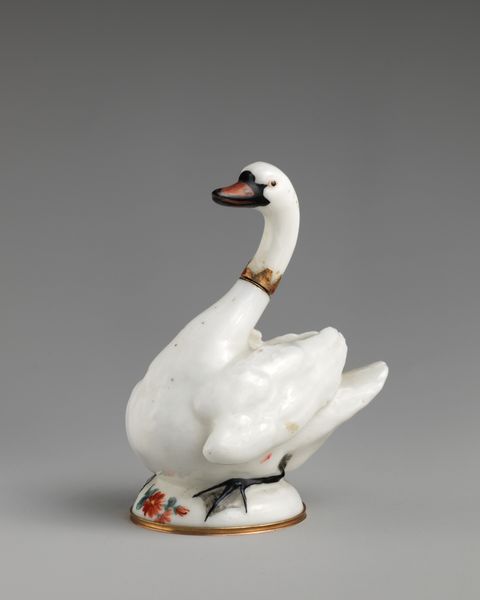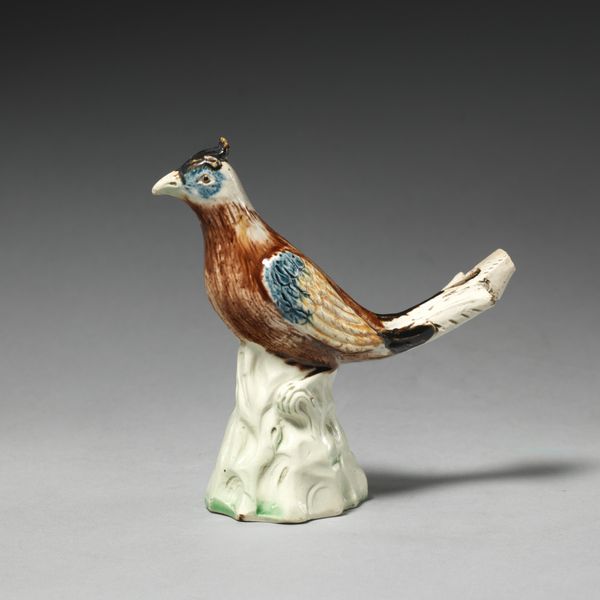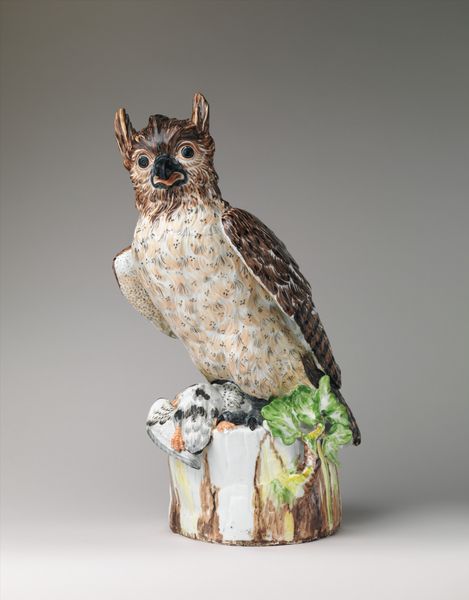
ceramic, porcelain, sculpture
#
baroque
#
animal
#
ceramic
#
porcelain
#
figuration
#
sculpture
#
decorative-art
Dimensions: 22 × 5 13/16 × 10 in. (55.9 × 14.7 × 25.4 cm)
Copyright: Public Domain
Editor: This porcelain sculpture, “Eagle (one of a pair)” was made by the Meissen Manufactory between 1725 and 1735. Its bright whiteness gives it a surprisingly contemporary feel, almost like something you'd see in a modern design store. How do you see it, looking at it now? Curator: I'm immediately struck by the interplay between form and material. The cold, hard porcelain is expertly molded to depict the soft, feathered texture of the eagle. Notice the meticulous detailing of each individual plume; how does this level of ornamentation affect the viewer’s perception, in your opinion? Editor: I suppose it does draw your eye in; you can’t help but notice the minute textures. It seems to make the sculpture more 'real', in a way. Curator: Precisely. This tension between the real and the represented is key. Consider the color palette, too. The stark white, broken only by a touch of ochre around the face and beak, amplifies the three-dimensional form. Does the colour palette also guide your eye in certain ways? Editor: Yes, the limited color really highlights the subtle changes in light and shadow, emphasizing its form. But beyond its appearance, what significance did these kinds of pieces hold? Curator: Forget any possible allegorical intention. Look, rather, at the line, volume and depth in relation to the coldness and hardness of the porcelain and reflect on how the sculpture's physicality generates emotional and intellectual responses in you, as a viewer. This work exists as a purely aesthetic object, divorced from external meaning and existing only through its physical and material attributes. It generates meaning from the interaction between those and its viewing public. Editor: That’s interesting! I’d not considered thinking about a piece this old in that way before, to leave behind allegorical interpretations and instead simply focus on the artwork’s ability to prompt feelings in people. Curator: Precisely. We mustn't be led astray by cultural context. Let us appreciate the visual experience first.
Comments
No comments
Be the first to comment and join the conversation on the ultimate creative platform.

